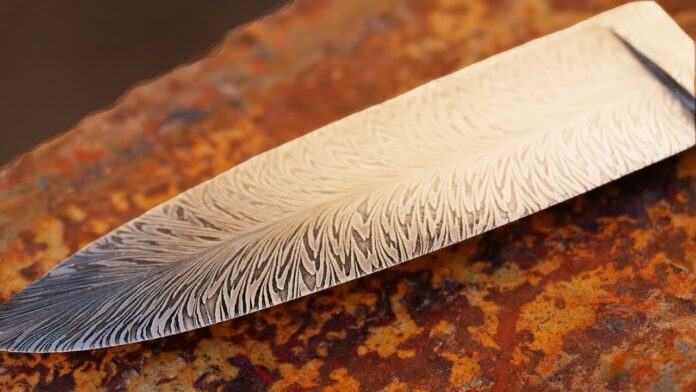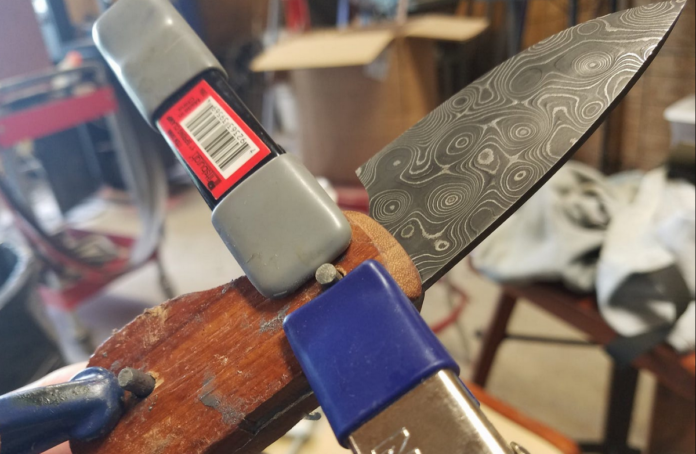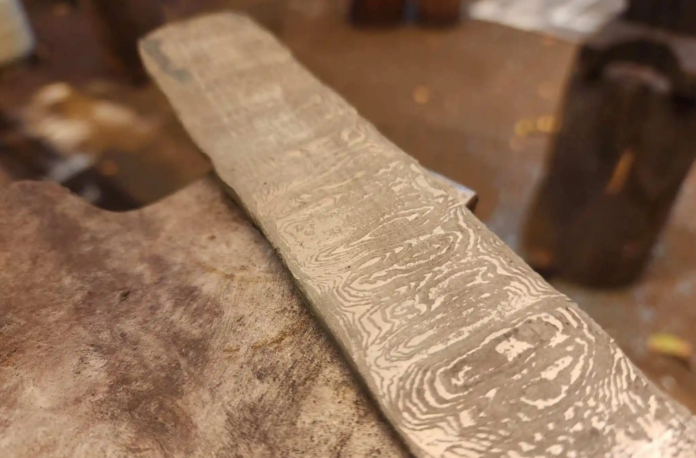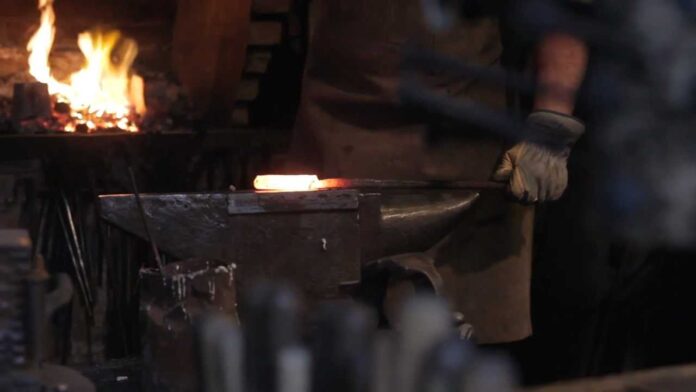Damascus knife blades are highly sought after for their unique beauty and extraordinary strength. Named after the city of Damascus, these blades are renowned worldwide for the distinctive patterns on their surfaces, reminiscent of flowing water or waving grain.
The process of making Damascus knife blades greatly impacts their quality, function, and overall value.
This is why understanding the manufacturing process is essential for both artisans and shoppers. It helps artisans refine their craft and allows shoppers to appreciate the work that goes into each blade and make informed purchasing decisions.
The two most popular methods in creating the blades for Damascus knives are forging and stock removal. The former is a traditional, labor-intensive process involving heating, folding, and hammering steel.
It often results in knives of superior quality, strength, and unique pattern. The latter, stock removal, is a modern method where artisans start with a large piece of steel and then cut, ground, and shape it into the desired form of the knife blade.
Both methods have their merits and demerits, which will be discussed in the following sections.
The Process of Forging

Forging is an ancient process that has been used for thousands of years to create sturdy and durable metal objects, including weapons, tools, and jewelry.
In terms of Damascus knives, the forging process has been refined and perfected over centuries to produce knives of unparalleled strength and beauty.
The method involves superheating different types of steel, folding them together, and then manually hammering the steels until they are fused. This repetitive process results in the distinctive layered pattern associated with Damascus steel. The following is a step-by-step description of the forging process:
1. Material Selection
Artisans choose two or more different types of steel to create the desired variety of layers in the Damascus blade. High carbon steel is often used for its hardness and edge retention qualities.
2. Heating
The chosen steel types are then stacked, heated, and hammered together. This process is repeated numerous times to create the layered steel billet.
3. Shaping
The billet is then heated again, hammered into the desired shape of the knife blade, and then cools down slowly to prevent any forming of structural weakness in the steel.
4. Cooling
Finally, the knife is tempered by heating it to a lower temperature and then cooling it relatively quickly. This step helps to increase the overall toughness and durability of the Damascus knife.
The Process of Stock Removal

Stock removal, another common method of creating Damascus knife blades, is a subtractive process where the blade is crafted by systematically removing material from a solid block of steel.
This method emerged with modern machining and tooling capabilities. For knife-making, stock removal can offer greater precision and consistency, making it popular among both hobbyists and professional knife makers.
The following is a step-by-step description of the stock removal process in making Damascus knife blades:
1. Material Selection
The knife maker begins with a solid block of Damascus steel made by others or purchased from a supplier. The starting material is already patterned and layered, ready for shaping.
2. Cutting/Shaping
Using a bandsaw, milling machine, or other cutting tools, the knife maker cuts and shapes the steel into a rough outline of the finished knife blade.
3. Grinding
Specialized knife grinders or belt sanders are used to refine the shape and to grind the bevels of the blade. This tooling process gradually brings the blade to its final shape.
4. Polishing
After the blade has been shaped and ground, it is then polished to a high shine. The polishing process reveals the mesmerizing pattern of the Damascus steel.
Comparing Forging and Stock Removal

Forging and stock removal possess unique features that sway artisans to prefer one method over the other. Forging, a traditional method, is labor-intensive and requires a considerable amount of time and physical effort.
It also requires specialized tools, such as a forge, anvil, and hammers, and a high level of skill to master. Conversely, stock removal is a more modern method that, while also requiring skill, is often faster because it eliminates the need for forming and shaping the steel billet.
The tools used can range from basic – like saws, grinders, and files – to more advanced machinery depending on the maker’s preference and budget.
The blade’s manufacturing process significantly contributes to the final quality and characteristics of Damascus knife blades. Forged blades are known for their enhanced strength, toughness, and individualized patterns – a reflection of the skills and artistic input of the blacksmith.
Stock removal, on the other hand, offers precision and consistency. However, some argue that these blades lack the structural strength seen in forged knives as the process does not involve the same degree of internal bonding of the steel layers.
Maintenance and Care
Proper maintenance is key to preserving the functionality and aesthetics of Damascus knives. Sharpening is crucial; using a whetstone is recommended for maintaining the blade’s edge without damaging its unique pattern.
Regular cleaning is also vital. After use, gently clean the blade with mild soap and water, then thoroughly dry it to prevent rust. Avoid dishwashers as the harsh chemicals and heat can damage the steel. For storage, use a dry, ventilated area.
Knife blocks or magnetic strips are ideal to prevent blade damage. Regularly applying a small amount of mineral oil keeps the steel in pristine condition, protecting it against corrosion and helping maintain its distinctive pattern.
With proper care, Damascus steel knives can last for decades, making them an excellent gift for any kitchen aficionados!
Safety Measures

Working with Damascus steel involves risks. Safety is paramount, whether for experienced artisans or hobbyists. When dealing with hot steel, use protective gear like gloves and eye protection to prevent burns and injuries.
Power tools should be handled with utmost caution, ensuring they are in good condition and used in a safe environment. Sharpening and handling sharp blades require attention and care to avoid cuts.
Always work in a well-lit, organized space and keep first aid supplies within reach for immediate response to any accidents.
Emerging Trends
Damascus knife making is evolving with new materials and techniques enhancing this age-old craft. Innovations like incorporating high-tech alloys and experimenting with different metal combinations are gaining traction.
These advancements offer improved strength and corrosion resistance while retaining the artistic beauty of traditional Damascus patterns. Some artisans are also exploring environmentally friendly methods and recycled materials, reflecting a growing trend towards sustainability in craftsmanship.
Staying abreast of these trends not only informs enthusiasts about the latest in Damascus knife making but also shows the dynamic nature of this ancient art form.
The process employed in the making of Damascus knife blades, whether it be forging or stock removal, largely determines the blade’s final characteristics and quality. Understanding these processes and their impact can greatly enhance your appreciation of these extraordinary knives and assist you in making informed purchases.
No matter the method, each Damascus blade, with its unique pattern and inherent strength, is not just a tool, but a piece of artistry linking back to centuries of tradition and craftsmanship.








